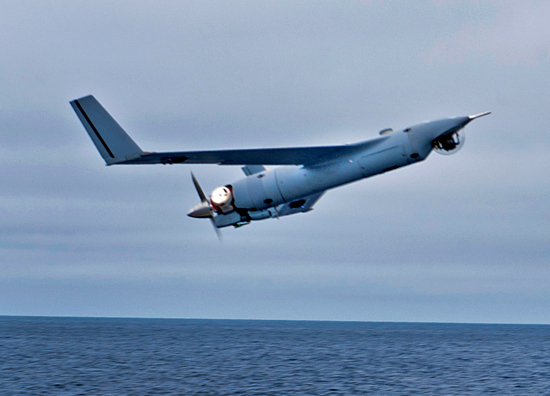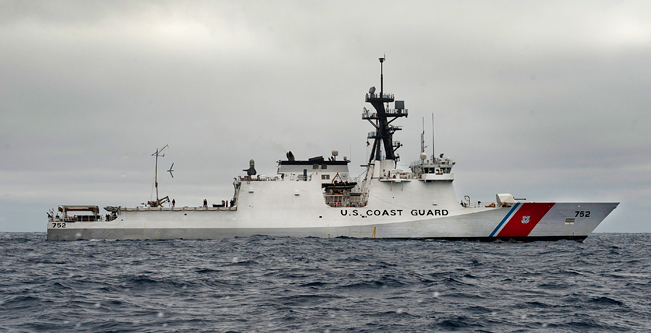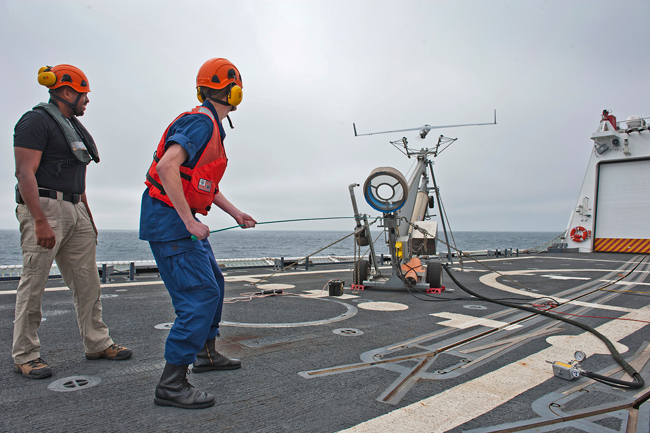
This spring with the aid of a small, unmanned drone more than half a ton of cocaine was confiscated — signaling the first time the U.S. Coast Guard deployed an unmanned aerial system from a cutter in a drug interdiction. i-HLS reports.
The service has put the ScanEagle through two weeks of trials at sea in May and has high hopes for the future: rolling out a small UAS across its national security cutter fleet, starting in fiscal 2017. The trial aboard the cutter Bertholf, conducted off the western coast of Central America, was used to assess how unmanned vehicles operate with Coast Guard cutters.
The UAVs, which relay video back to the ship, increase the surveillance reach of the NSCs. The overhead surveillance can help bust drug smugglers, but it can also track flight patterns or fishing operations.

During the two-week demo, the ScanEagle completed 90 hours of flight time. The Bertholf crew seized the cocaine in late May using the UAV to spy on a go-fast boat smuggling the drugs in the eastern Pacific. During the operation, the ScanEagle “was able to maintain visual surveillance of the target until a cutter was able to get out and interdict the vessel,” said Lt. Cmdr. Jeff Vajda, the unmanned aerial system platform manager for the office of aviation forces.
This is not the first time the Coast Guard had tried to equip its NSCs with unmanned capabilities. EagleEye, a rotary wing UAV, was tested but ultimately abandoned in 2007 “due to rising costs and technical challenges,” said Cmdr. Albert Antaran, the aviation portfolio manager for the office of research, development, test and evaluation. With the cancellation of that project, the NSC’s aerial surveillance coverage area dropped from a potential 58,000 nautical miles to about 18,000 nautical miles, according to a 2009 Department of Homeland Security report.
The Coast Guard is trying again, but this time with a smaller UAV that’s easier to field and already has a proven flying record in the Navy and Marine Corps. May marked the second demo of the ScanEagle. The first was on NSC Stratton last summer and focused on the basics. The third demonstration will be in early 2014.
The service hopes to obtain hard numbers on the value that the unmanned system provides the Coast Guard, Vajda said. That would include measuring the surveillance capabilities of sensors, and how well they can detect objects at sea.
The Coast Guard’s five year investment plan calls for small UAS purchases in fiscal 2016, so that’s “the soonest we can spend any real money,” Antaran said.
And while it is evaluating the ScanEagle, the service may ultimately opt for a different airframe, Vajda said. Although it looks like the service’s first cutter-based drone will be a small UAS, it’s just an interim solution. The service is still monitoring the Navy’s Fire Scout, an unmanned helicopter, as a possibility. The Fire Scout is much larger — at more than 30 feet, it’s seven times the length of the 4.5-foot ScanEagle.
Each cutter with a small UAS will likely have a specialized six-person detachment of Coasties onboard to operate the drone, Vajda said. Pilots will be officers, as there are no immediate plans for enlisted to fly unmanned aircraft, Vajda said. The detachment will include three pilots and the rest of the crew will be enlisted who cover maintenance and launch and recovery.
The Coast Guard already has eight active operators of unmanned aircraft, but they deploy the land-based MQ-9 Guardian, owned by U.S. Customs and Border Patrol. They operate the Guardian jointly with CBP from stations in Florida and Texas.
Long-term, the Coast Guard also envisions UAVs on offshore patrol cutters, the replacement for the medium endurance cutters, Vajda said.
Officials stress the service’s UAVs are not meant as replacements for Coast Guardsmen, but are meant to contribute to manned capabilities.



















